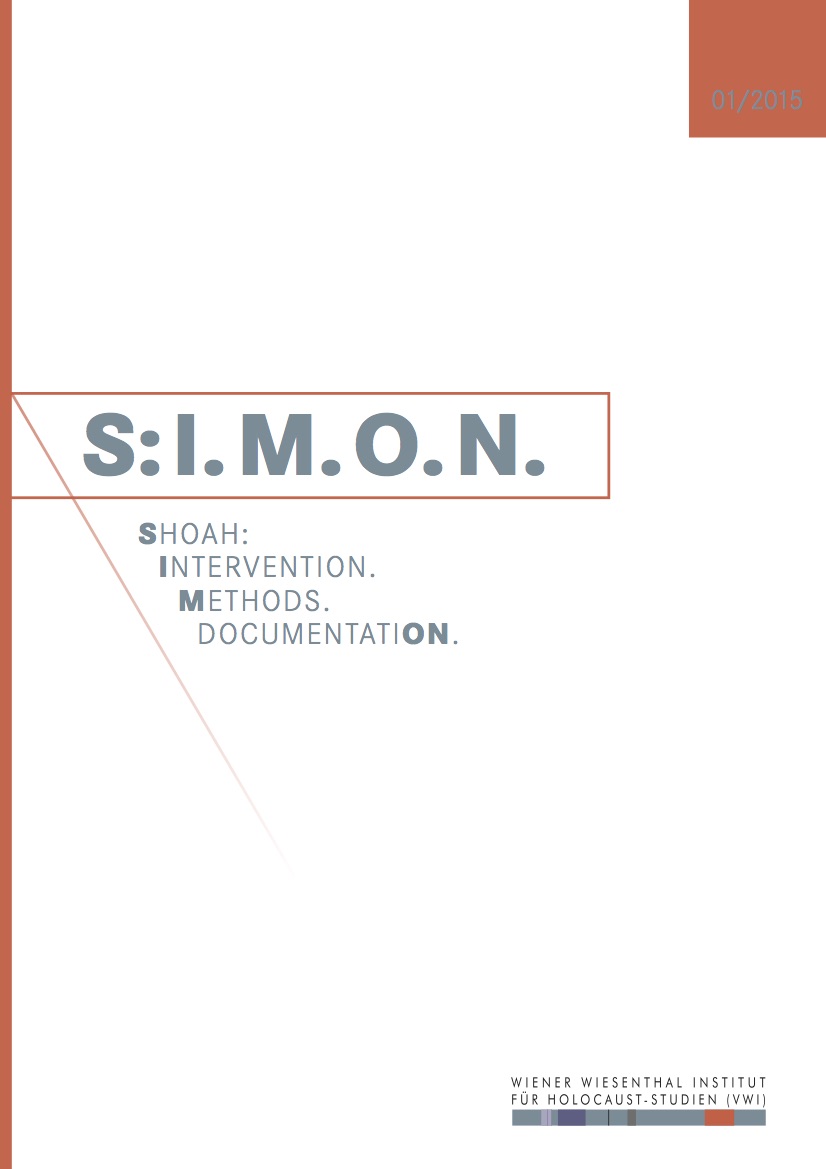Die Beziehung zwischen der Pester Israelitischen Gemeinde und der IKG Wien - Vom ,Anschluß‘ bis zum Beginn der Deportationen 1941
The Relationship Between the Jewish Community of Pest and the IKG Vienna - from the 'Anschluss' to the Beginning of the Deportations in 1941
Author(s): Kinga FrojimovicsContributor(s): Andrea Dunai (Translator), Béla Rásky (Editor)
Subject(s): Jewish studies, Recent History (1900 till today), Interwar Period (1920 - 1939), WW II and following years (1940 - 1949), History of the Holocaust, History of Antisemitism
Published by: Wiener Wiesenthal Institut für Holocaust-Studien
Keywords: IKG Vienna; Anschluss; deportations; 1941; Jewish Community of Pest;
Summary/Abstract: In 1938 the Jewish Community of Pest (PIH)] and the Israelitische Kultusgemeinde Wien (IKG) were the two largest Jewish communities of Central Europe. By 1938, the two Jewish communities had cultivated strong relationships with one another for over a century. However, the nature of the relationships between the two Jewish communities had changed drastically in 1938. As a consequence of the increasingly worsening official anti-Jewish discrimination, ties of social and legal aid had exclusively replaced any other kinds of relationships. The following areas had been central to the mutual work of extending social and legal aid to one another: Religious life, chiefly issues of kashrut; Social aid for members of the community; Emigration from Austria after the ,Anschluß’; Issues concerning one’s Hungarian citizenship after the anti-Jewish legislation.A systematic study of the relationships between the two largest Central European Jewish communities between 1938 and 1941 will enable us to understand how these increasingly adversely influenced central institutions of Jewish life attempted to assist their members and one another during the first phase of the Holocaust. To show how the two communities collaborated and tried to help each other is crucial, since these Jewish institutions are routinely portrayed even in historical works as isolationist bodies that were utterly uninvolved and uninterested in the problems of the Jewish world in general. The study will explore how their ties between 1938 and 1941 (until the beginning of the mass deportation of Viennese Jews) influenced the behaviour of the two communities and their members both in the later phases of the Holocaust and its aftermath. The ties of legal and social aid provided a viable model as well as a context for later patterns of relationships within and also without the Jewish world.
Journal: S:I.M.O.N. Shoah: Intervention. Methods. Documentation.
- Issue Year: 2/2015
- Issue No: 1
- Page Range: 28-38
- Page Count: 11
- Language: German

